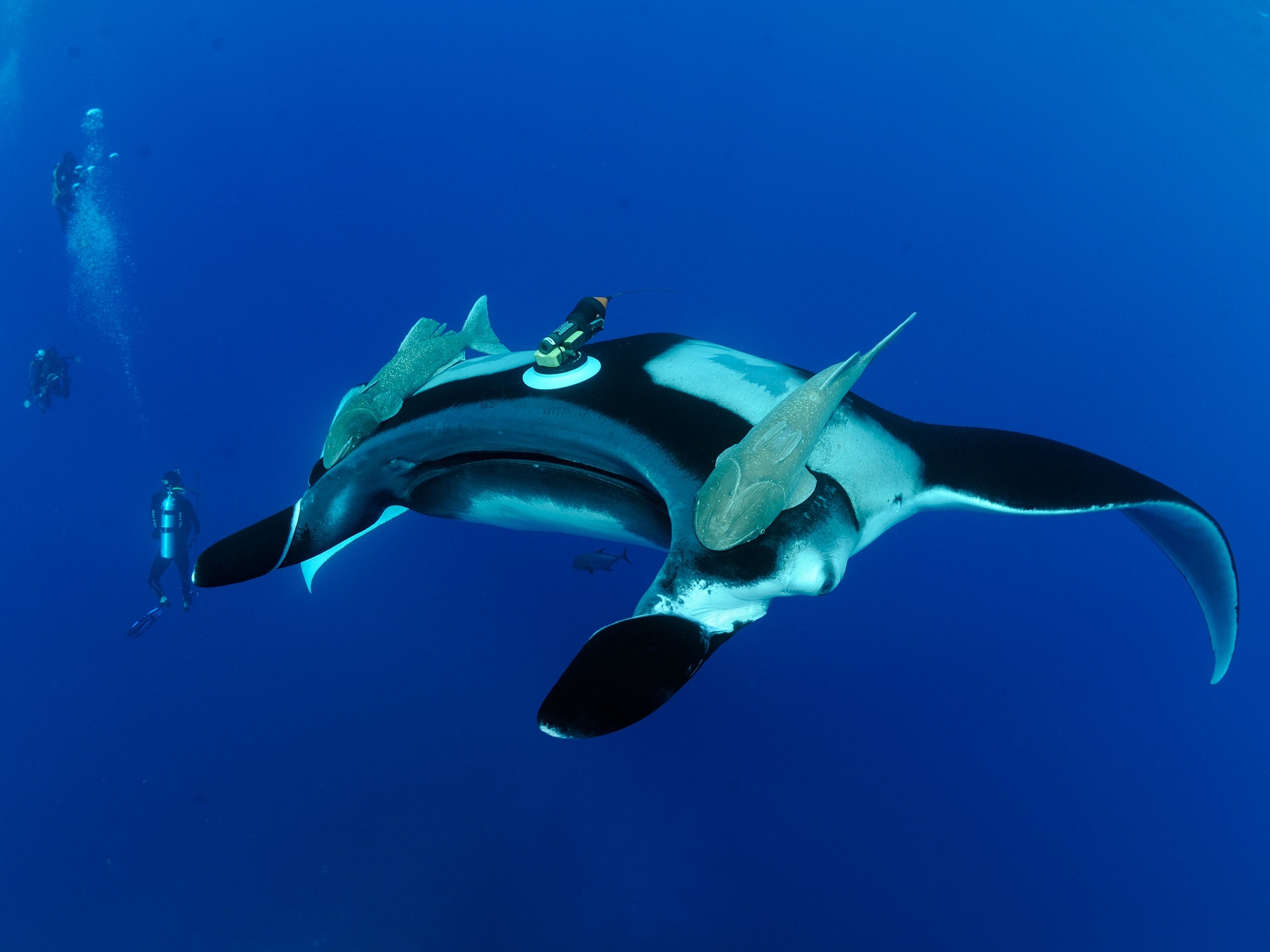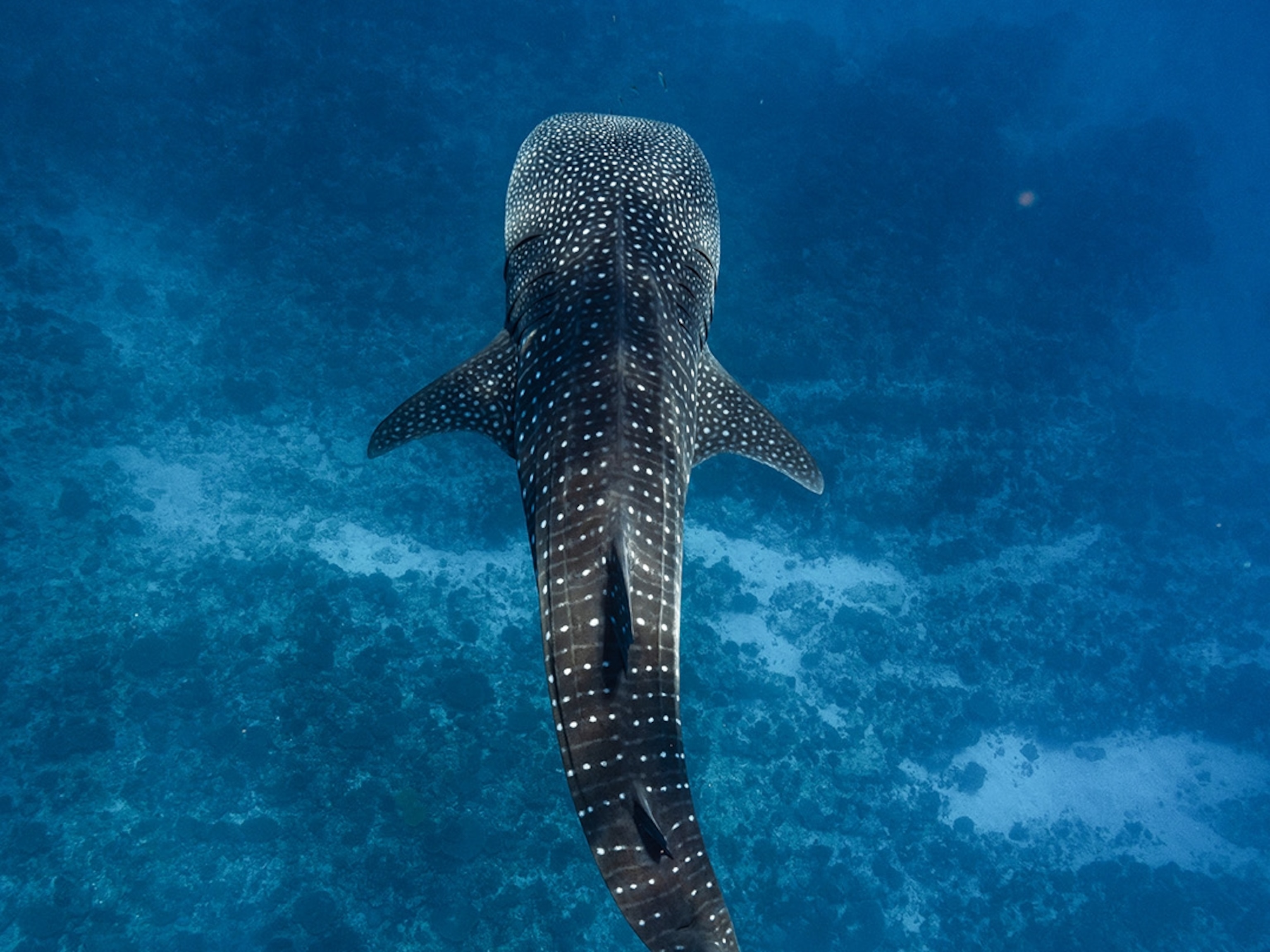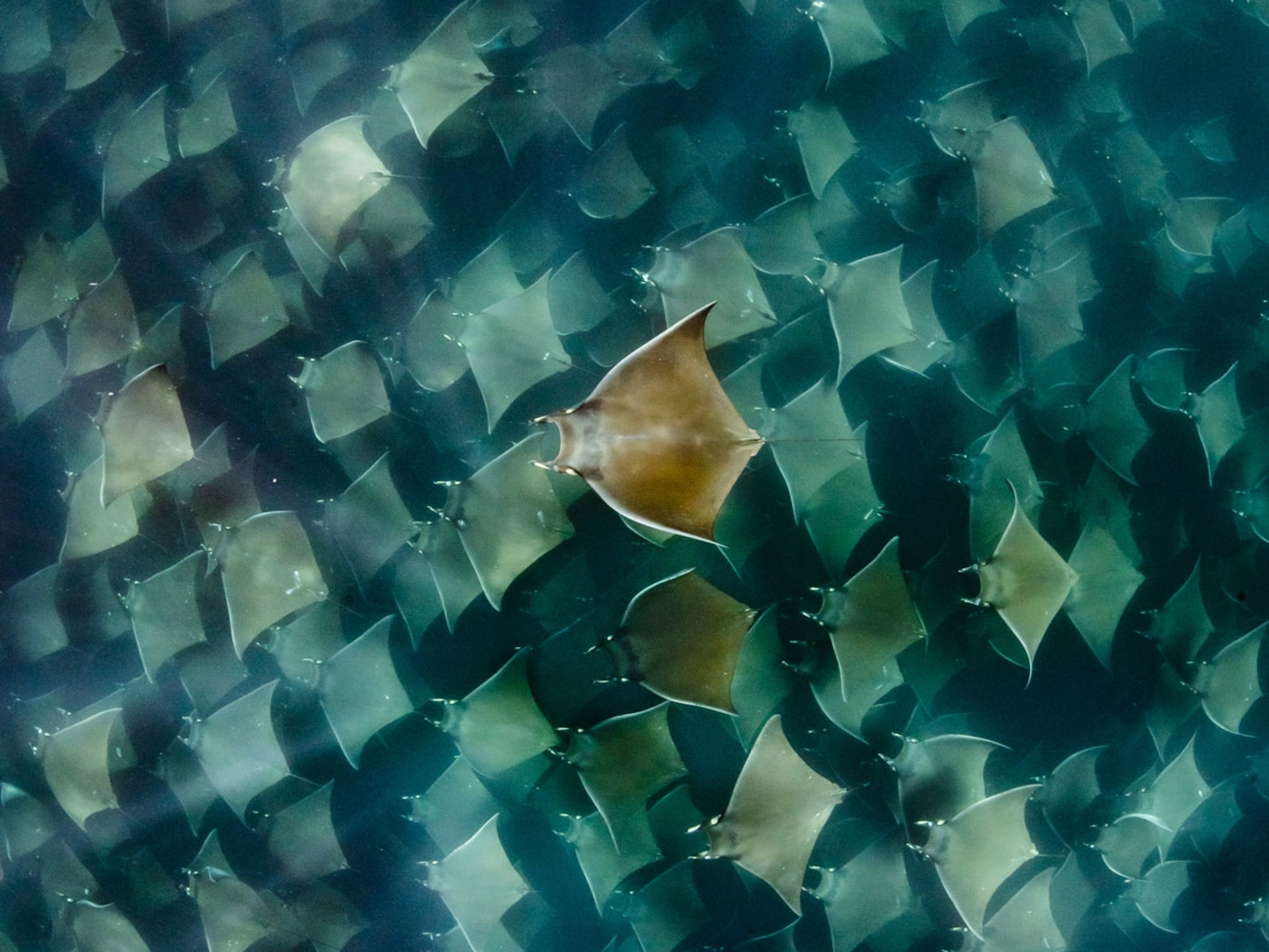Manta Rays Get Crittercams for First Time Ever
Suction cup cameras allow scientists to observe elusive manta behavior, which may help conservationists protect the threatened animals.
Manta rays, which are among the bigger and more charismatic animals in the ocean, have captured humans' imagination for generations. And yet scientists still have many unanswered questions about rays' behavior. Why do they dive so deep? What do they eat in each season? Why do they congregate in certain areas?
To answer some of these questions, and to find information that could stem population decline, National Geographic's Crittercam team joined forces with the Scripps Institution of Oceanography in southern California and the Manta Trust in the U.K. to attach cameras to wild mantas.
Recent trials in the Revillagigedo Islands off central Mexico's Pacific coast marked the first time cameras were ever successfully attached to the animals, which can reach widths of up to 23 feet (7 meters). (Learn about new protections for manta rays in South America.)
We spoke with Scripps and Manta Trust researcher Joshua Stewart about the Crittercam project.
What challenges did you have to overcome to get cameras on wild mantas?
The biggest technical challenge was finding a way to attach the cameras. Mantas are basically big flat disks. Unlike sharks, say, their dorsal fin is all the way at the back of their body, so you can't see anything if you attach a camera there. We looked at hooking it onto their snout or looping it onto their horns, but we decided both of those would impact the animals quite a bit. We thought about clipping on tags, the way scientists attach satellite transmitters to rays, but our thinking was that would be too invasive.
We didn't think suction cups would work because manta ray skin is really rough like sand paper. We knew suction cups worked well on the smooth skin of whales. The cups were originally designed to move pieces of glass. But we gave it a try, and with a solid push with our hands we discovered it would actually stick on for two and a half to three hours.
Why did you go to the Revillagigedo Islands to test the cameras?
We needed to find manta rays that are around consistently and are friendly enough so you can swim up to them. The Revillagigedo Islands are ideal for that. People have been diving there with rays for 30+ years and they have become very friendly. In areas where there is no dive tourism manta rays can be really skittish.
Do you have to get the cameras back to retrieve the footage or do they transmit the video?
We have to get them back. There's a little VHF radio antenna on top of the camera, and when it pops off it's weighted to float in a way that keeps the antenna pointing out of the water. The Crittercam team has a radio receiver so we can track it down.
What specifically do you hope to document about the rays?
One of the things we're really interested in is feeding behavior. We can see what depths they dive to with satellite tags but we don't know what they are doing down there. We think they are feeding, but we never actually know until we see it.
We're interested from an ecological perspective but it also plays into conservation, because if you can figure out what they are eating at certain times of year it becomes easier to predict where they will be, based on those food sources. A big threat to mantas is bycatch, when they are caught accidentally by fishermen. It's a notoriously difficult problem to tackle because it is not targeted and it's unclear when you'll catch one. We hope to identify where they are feeding, to better predict when they are most vulnerable to bycatch.
How are manta rays faring?
Manta populations are declining around the world, from both bycatch and some commercial fisheries. Any information we can get about them is really important for feeding back into conservation and management strategies, to try to start reversing those declines.
Why do you think people are so intrigued by mantas?
People love mantas because they are the only really big megafauna that you can have close personal interactions with. Even with other large herbivores, like an elephant or rhino, you can't go walk up to them and look them in the eye. That goes double for any kind of predatory animal. Mantas are enormous, weighing several tons, but you can swim inches from them. They'll come and play with you and look you in the eye, and you can tell there is intelligence there.
What's next for the project?
We're working on adding active suction to the cups, with an air pump, so they stay on better. It's tough underwater, but hopefully we can get a camera to stay on for up to 10 hours, so we can record more behavior. We're planning on going out again in April to a study site on mainland Mexico.
This interview has been edited.





